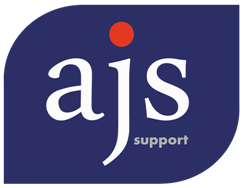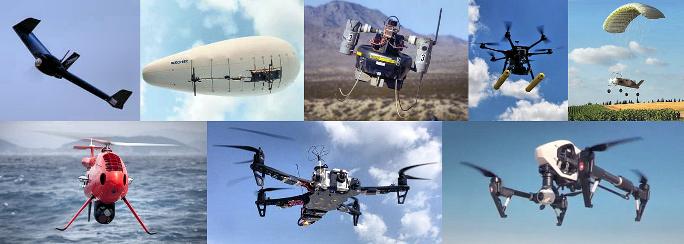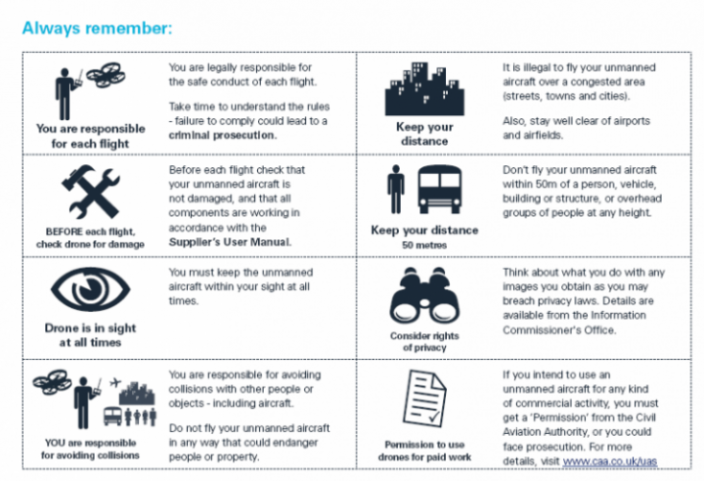RPAS Flying Responsibly, Safely and Legally
Drones, RPAS, UAV, UAS …. it does not matter what you call them or what they look like (rotary wing, fixed wing, multi rotor, Lighter Than Air) or even what you are using them for (recreation or commercial); all are subject to UK CAA policy and rules when flying. When these systems are operated with onboard sensors (eg imagery), UK privacy and data protection laws are a consideration.
These RPAS systems are increasingly popular, because a complete flying novice can purchase one and go straight out and manage to get it off of the ground. Once off of the ground, consideration must be given to the safety of aircraft, people, animals, property and privacy.
A J S have assisted small business operators in understanding the requirements to operate safely and within the law. We have also helped with developing operating procedures based on 30 years aviation experience. Contact us to discuss your situation and if/how we may be of assistance. We could arrange to assist you in either an adhoc manner “support by the hour” as and when you require it, or we can agree a firm priced support package to suit your needs and budget. Contact Us
A few points and associated references and explanations are provided below. Please use the latest referenced documents as the guidance and if in doubt seek advice.
 Irrespective of what type of flying (recreational or commercial), you have a responsibility for safe and legal use of the system, ignorance is not an excuse. Not all flyers of these systems will be aware that all air systems that fly in UK airspace are subject to the rules of the UK Civil Aviation Authority (CAA); these rules are published in CAP393 – Air Navigation: The Order and the Regulations.
Irrespective of what type of flying (recreational or commercial), you have a responsibility for safe and legal use of the system, ignorance is not an excuse. Not all flyers of these systems will be aware that all air systems that fly in UK airspace are subject to the rules of the UK Civil Aviation Authority (CAA); these rules are published in CAP393 – Air Navigation: The Order and the Regulations.
Commercial flyers carrying out Aerial Work should operate in accordance with CAP722 – Unmanned Aircraft System Operations in UK Airspace – Guidance.
Model flyers should operate in accordance with CAP658 – Model Aircraft: A Guide to Safe Flying and the guidance for model flyers on the CAA website here.
 British Model Flying Association (BMFA) – There are many sources of additional guidance for safe and legal recreational flying from organisations such as BMFA, Large Model Association, FPV UK.
British Model Flying Association (BMFA) – There are many sources of additional guidance for safe and legal recreational flying from organisations such as BMFA, Large Model Association, FPV UK.
These high tech systems operate with HD cameras and recording systems which may infringe on privacy if not operated professionally. As with all of these areas there is legal, policy and guidance available on line:
 Data Protection Act – Drones – The Information Commissioners Office (ICO) has specific rules for operators of these types of air systems. Link
Data Protection Act – Drones – The Information Commissioners Office (ICO) has specific rules for operators of these types of air systems. Link
 CCTV Code of Practice – A data protection code of practice for surveillance cameras and personal information – Para 7.3 Unmanned Air Systems. Link
CCTV Code of Practice – A data protection code of practice for surveillance cameras and personal information – Para 7.3 Unmanned Air Systems. Link
You only have to look at online video sites and in the national news (eg The Sunday Times) to see the evidence that systems are being flown outside of the rules for safe and legal flight in UK. I would suspect that companies like DJI will be rubbing their hands together with the increased interest, and so will the legal firms; it may be too easy to blur the line between recreational and commercial flying to generate debate and revenue.
The CAA are actively seeking out irresponsible and illegal operators of RPAS. It is not difficult to find the operators from a wealth of evidence on social media websites like YouTube and Twitter. It is clear who have little regard for aircraft, people, animals, property and privacy from these videos and photos. The CAA has a Whistleblowing Report Form, this form may be used to submit a report to the CAA under the Public Interest Disclosure Act 1998. With over 400 legally registered commercial RPAS operators not wanting to lose customers due to bad press from illegal operators, this could be a quick and easy method to reduce the risk of potential bad press.
The UK CAA has recently published a useful leaflet promoting the basics of safe and legal flying of these systems. It is definitely compulsory reading for new flyers and maybe a timely reminder for the ‘old sweats’.
We have included graphics form the leaflet in this post please see the CAA site for the latest version of the guidance. Here.
If you found this useful and know any other pilot or group that may also find it useful, please share freely.
If you require assistance in understanding the information available, or wish to develop a commercial operation using remotely piloted systems, please contact us to see how we may be of assistance. You can see our background and experience here and you can contact us from here.



